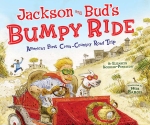Revision
Rewriting doesn’t have to be drudgery. In fact, once you get going, it becomes addictive! One writer I know used to have a license plate that said REWRITE!
How exactly DO you pare down a story or a personal narrative to find the core of your story?
Here are some tips.
Remember these ideas:
Narration: when something is less dramatic or important, you can breeze through it by narrating it. However, when it’s an important scene, like when you actually break your arm, get stuck at the top of the Ferris wheel, then it’s time to show us a sensory moment-by-moment view.
When you can summarize and need to cut, narrate. When you want to take the reader to the important times of the story, show through a scene.
Revision Tips
1. First tell your story. Just get it out! Don’t worry about the length. Tell it all.
2. Next read it out loud. Decide where is your climax. You’ll know this is your major show-not-tell scene!
3. The backstory, or how your character or story came to be, is sometimes less important and can be narrated. In short stories sometimes it only needs to be a sentence or two. (But your story or personal narrative/essay is stronger if you have an inner journey as well as what happened to you or your character. Don’t neglect your thought process and what you or the character learned, or how the character changed.)
4. Take out too many passive verbs like “was” and “were.” Yes, you may need some of them, but too many slow the story down. It’s better to say “I ran” rather than “I was running.”
5. Instead of “lovely house” be specific and appeal to the senses.
6. Only use dialogue that matters. If it doesn’t show conflict or tension, cut it.
7. Do you have ping pong dialogue? (Dialogue without any reactions between the two characters.)
“I killed him,” said Tom.
“How did you do it?” asked Madison.
“With his own weapon,” said Tom.
“Where did you hide the body?” asked Madison.
“I’m not telling,” said Tom.
“Give me a hint,” said Madison.
“You’ll be there next,” said Tom.
8. Come up with a main idea or theme. Write it at the top of your manuscript. Paste it on a sign at the top of your computer! Does every paragraph relate to your theme? This may help you prune your story.
9. What are your favorite parts of your story? What is absolutely essential?
Again, highlight.
10. When you can’t cut anymore, hand it to another trusted writer colleague. Many times another set of eyes are needed. They can mark in the margins their favorite parts or where they think it could be cut or summarized. (Narrated)


 Zoie
Zoie